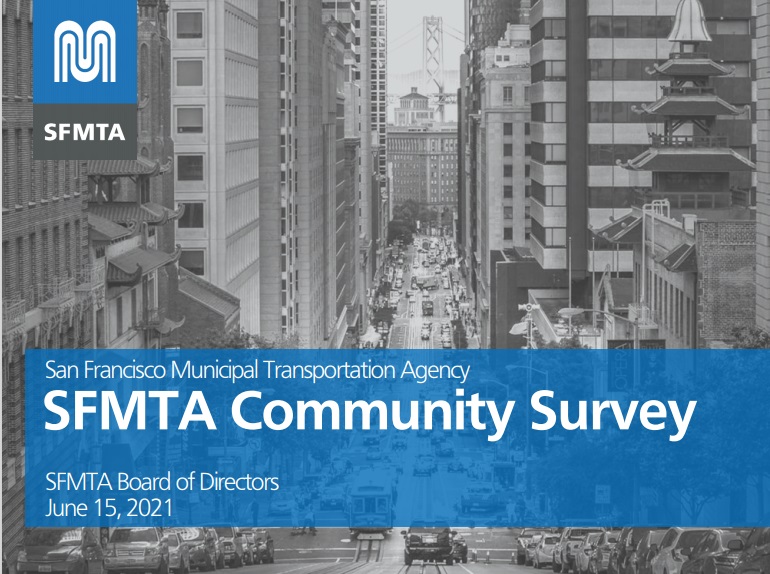By Benjamin Barnett

Since the beginning of the pandemic, the SFMTA has been looking for ways to strengthen our system and improve our efficiency. We are using this opportunity to come back as a better version of ourselves. A big part of making transportation improvements is to hear from the public about what works and what we can do better. Earlier this spring we completed a community survey of over a thousand San Franciscans asking for your thoughts about public transportation in San Francisco and here is what you had to say:
Muni is Essential for Social Equity
Muni service is essential to making San Francisco a socially equitable and just city. Seven of ten people surveyed describe Muni as an affordable transportation option, and more than two-thirds also support expanding our existing reduced fare programs for youth, seniors, and low-income residents. Seniors, people with disabilities, people of color and low-income San Franciscans have the fewest transportation options and rely on Muni. We are committed to removing any and all barriers to access, including income.
Overall, having more frequent and reliable service was a higher priority (68%) than lowering fares for everyone (28%). At the same time, for those households with incomes under $35,000, lowering fares was the higher priority. We want to ensure that the cost of a Muni fare isn’t a barrier to transportation, and the SFMTA is working to identify funding to expand free and discounted fares without sacrificing Muni service. As San Franciscans recover from the COVID-19 pandemic, Muni service is essential to ensuring everyone in the city can access jobs, health care, schools and groceries, regardless of their income or neighborhood.
Need for More Transportation Funding
Over the last twenty years the demands on San Francisco’s transportation system have increased while revenues haven’t kept up, and the pandemic has only made these problems worse. Recent federal aid helped prevent steep cuts to Muni service but these one-time funds were only a stop-gap measure.
We are encouraged that San Franciscans have heard our message about the agency’s need to rethink funding for the future. Approximately three-quarters of survey respondents see a need for additional funds to improve Muni and back the concept of potential funding proposals to provide it. Seven out of ten people are concerned about a lack of funding leading to service reductions.
Improving on Environmental Goals
Public transit is one of the most important tools we have in the fight against climate change. Eight of ten people describe Muni as good for the environment. By investing in electric buses, improving the reliability and speed of Muni service and making the city a safer place to walk and bike, we are making transit more environmentally sustainable. We already have one of the greenest fleets in the world, but we are committed to transitioning to an all-electric fleet in the years to come.
Muni Service and Facility Upgrades
One interesting note, a majority of people surveyed rate Muni service as “good.” More frequent Muni riders were even more positive about Muni’s service (75% rated it excellent/good). However, improving the speed, frequency and reliability of buses and trains is a top priority for San Franciscans. Key improvements residents want prioritized include:
- Providing quick, convenient transit access to all parts of San Francisco
- Repairing and maintaining Muni equipment and facilities to ensure vehicles’ safety, frequency and reliability
- Increasing and improving Muni service for the communities most dependent on transit
- Ensuring Muni service is inclusive and accessible to all
- Reducing delays to make Muni more reliable
Next Steps
We are continuing to gather feedback from the public and from SFMTA staff to ensure our transportation projects and programs reflect our community’s priorities and values. Your feedback will be the focus of our planning and guide us in making tough choices with limited resources. We will be using survey research to better understand the pandemic’s impact on transportation in the community. In the coming months, we will be fielding our bi-annual travel decision and Muni Rider surveys, as well soliciting more feedback about community transportation priorities. We want to thank you for your input and are working hard to bring you the service that you deserve. For more information, read the detailed report of our survey results.
Published June 16, 2021 at 08:32AM
https://ift.tt/3pZoYB2
Nhận xét
Đăng nhận xét